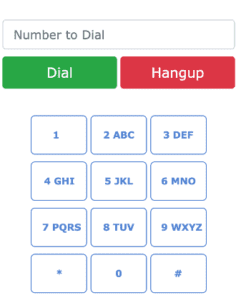 Conventional wired telephones in homes are becoming something of an anachronism as people do away with them in favor of mobile devices. Even businesses who traditionally rely on desk phones have migrated to Hosted PBX phone systems and are now integrating softphone solutions into their complete unified communications plan.
Conventional wired telephones in homes are becoming something of an anachronism as people do away with them in favor of mobile devices. Even businesses who traditionally rely on desk phones have migrated to Hosted PBX phone systems and are now integrating softphone solutions into their complete unified communications plan.
Softphones are simply a 2D graphic representation of a conventional telephone launched from an electronic device such as an iPad or laptop. Softphones provide the familiar dial pad, a hold button, mute button, transfer calls and even initiate conference calls.
The application is highly intuitive for first time users as the keypad image is identical to the smartphone most of us already carry. Another common example of a softphone interface is Skype™ which uses a similar interface design and communications delivered as data across the internet.
Why a Softphone?
Startup companies that begin in small spaces anticipate growth and the eventual need for a bigger location. Spending money on phone hardware may not be the prudent option.
There are other benefits to consider:
- Access to telephone service as an application while working anywhere internet is available, but a desk phone may not be accessible.
- Long-distance calls are free while using a softphone.
- You do need a phone extension, but don’t need to purchase the desk phone hardware.
- Telecommuters benefit as calls forwarded to a remote location are indistinguishable to the caller.
- Working from home saves a company money by reducing the need for office space rental, and saves employees transportation costs.
While the benefits are notable, there are a few technical limitations to address before abandoning your desk phone completely. Softphones are limited by the method of how they connect to the internet.
This means:
- Call quality is dependent on your internet connection and may affect your service either in call completion or call quality.
- Headsets are also recommended for privacy and sound quality.
- The processing power of your laptop or portable device can effect call quality, especially if you are also running other software applications while on a call.
Cell Data vs Soft Phone Data
One other processing issue to be aware of is that not all soft phone applications are equal. There is a difference in how a soft phone application call is handled versus how a cell call is handled based on the operating system of the phone. If you use a soft phone app on your cell phone, any cell call you receive may take priority because of the way the soft phone application was written.
For example, if you choose to call a client using your cell phone, but use the softphone app to save on calling charges, that client may suddenly find themselves on hold without warning if you receive a cell call at the same time. There is no way to turn off cell calls and still use your cell phone with a smart phone app.
If you have an Android phone, select CSIP Simple as your soft phone client to avoid this scenario. When a cell call comes through during a soft phone session, you will have the choice of whether to accept the cell call or not. Another alternative may be to use the soft phone app with a tablet, laptop or other mobile device and use your cell phone for cellular calls only.
There are many options to best suit every need and really, that is the core benefit of mobile technology for business. A true Unified Communications platform should offer the flexibility to match your changing business need and adapt to every situation.